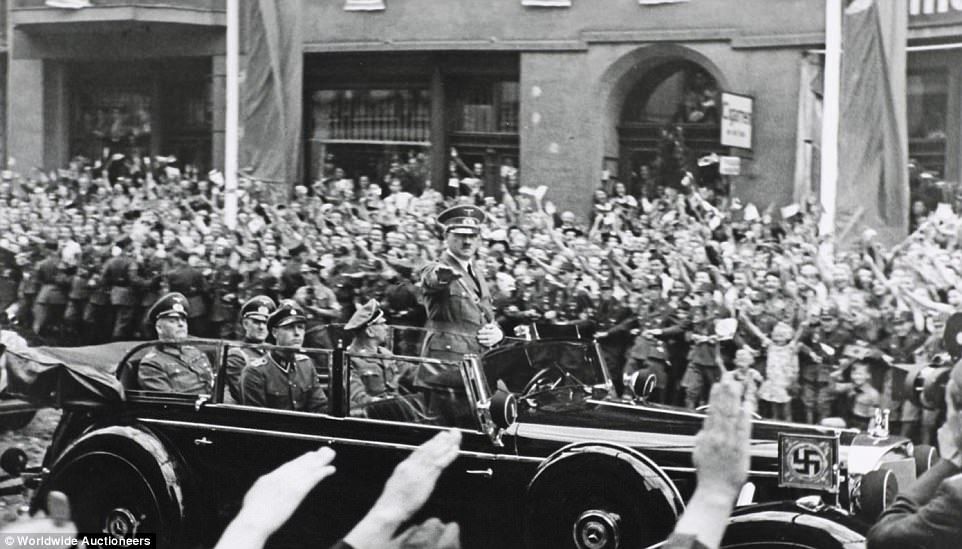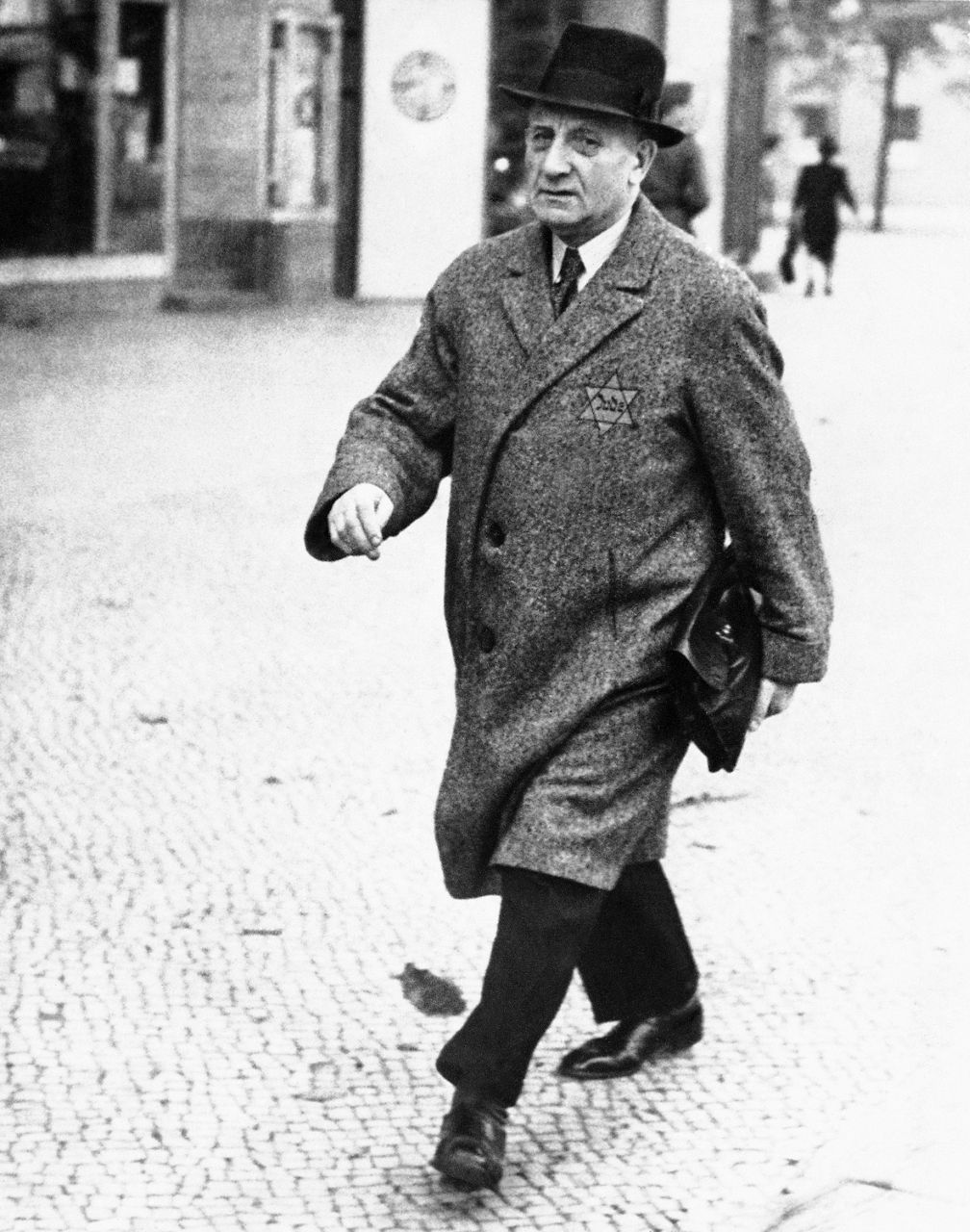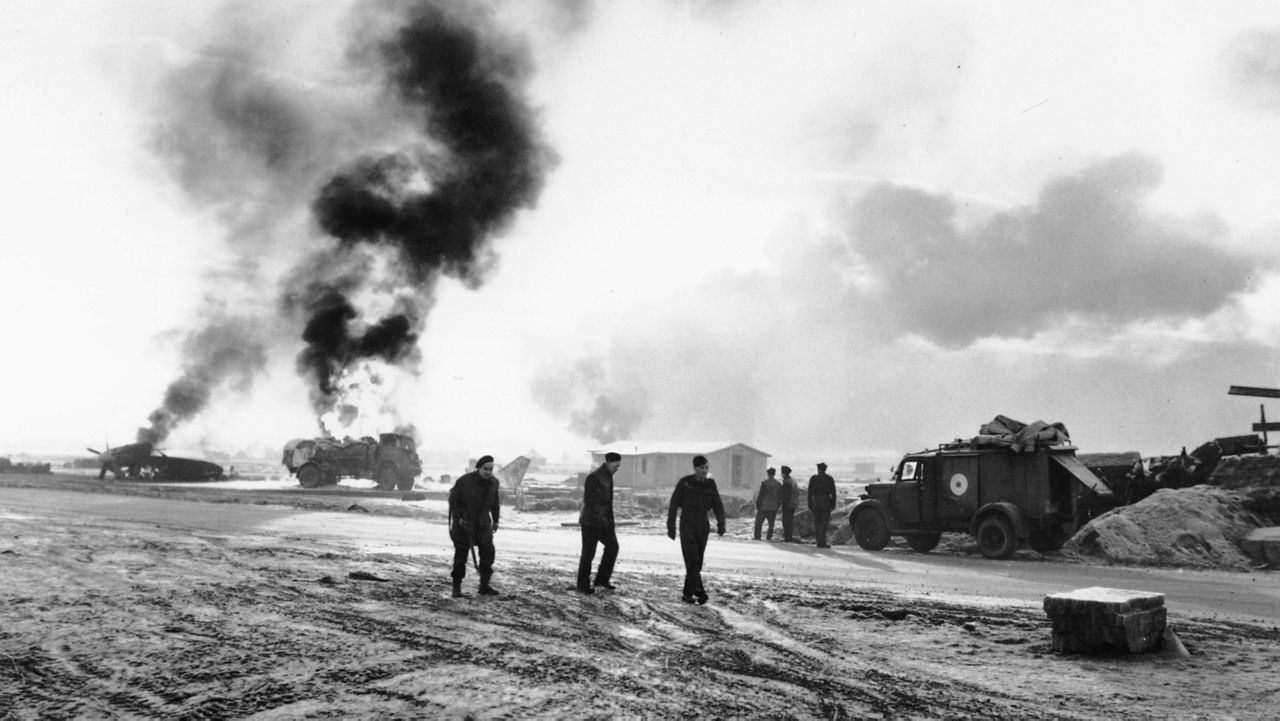Anne Van Herynen is an Appleton resident who grew up in Zevenaar, Holland, near the German border. World War II broke out during her formative years, and following is the first of a three-part series of how a young, teenage girl lived through the tragedies and triumphs of one of the most significant periods in our history.
APPLETON, Wis. – You wonder, if only for a moment, if you could see what her eyes have seen.
Anne Van Herwynen was only 12 years old that summer day in 1938 when she made the 20-minute bike ride from her home on the Holland border into Germany to see family. The town residents flooded the streets that day, lined up on either side and in a festive mood for the visitor who was soon to arrive.
Van Herwynen strained her neck to see the car coming down the street and then, as the chants reached full volume, there he was, in full view.
“He was standing up in the car,’’ she said of Adolph Hitler.

The crowd dutifully gave the Nazi salute and chants of “Heil Hitler’’ echoed all around her, and soon she began to feel the pokes in her side, the people looking at her and imploring her to fall in line and do the same.
“I said, ‘I don’t have to. I’m Dutch,’’’ Van Herwynen said.
This was a risky decision, even at this time, but she was unmoved about any sort of reprisal.
“No, I was too young to think about that,’’ she said. “A snot-nose, you know?”
It would be just a year later when Hitler turned the world upside down and World War II became the centerpiece of Van Herwynen’s teenage years.
“I hate him,’’ she said of Hitler.
“They stole the best years of my life from me. From 13 to 18, the best years of your life for God’s sake, and there was nothing going on. There was a lot going on, but nothing going on that I was looking for.’’
Today, Van Herwynen is 94. The war years revealed to her the absolute worst, and best, that human nature had to offer. Those were years that also saw the person she said was the love of her life, a man named Tom, lose his life in the Indonesian War of Independence. She would eventually meet a man named Peter Van Herwynen, who had a brother who had moved to Appleton, Wisconsin after the war and convinced Anne and Peter, who had two young children at the time, to do the same.
This is a life defined by triumph and tragedy, driven by a devout Catholic faith and the inevitable vagaries of youth.
“When I think about it now, all the stuff that I did,’’ she said, ‘‘holy Moses.”
Then, Anne Van Herwynen sits up in her chair to deliver this message.
“This is not only my story,’’ she said, “this is the story of the Dutch people.’’
There was supposed to be a marriage until Anne Van Herwynen’s grandmother decided there wouldn’t.
“My grandmother — and you have to know my grandmother — would not let my mother marry my father,’’ Van Herwynen said, “because, she said, ‘He’s no good. He’s a womanizer.’ And he was. I found that out later on; because he was damn good-looking.’’
So Van Herwynen, along with her mother, moved in with her grandparents. But meningitis took her mother at the age of four.
“When I came into the family, I never called them aunts and uncles,’’ she said. “I grew up with them. They were more like brothers and sisters.”
She said she had an ideal childhood, but all that changed in May of 1940.
“I remember, the 10th of May 1940, the day they came in – in all their glory,’’ she said of the German army.

It was just the night before when the country’s leader, Queen Wilhelmina, went on national radio to tell her people they need not worry, that Hitler promised he would not invade Holland.
“And in the morning there they were,’’ Van Herwynen said. “Four o’clock in the morning. I heard all the rigmarole on the street, went to look out and there they were, in their tanks and in their cars.
“The first year they kind of left us alone. But then it started.”
Zevenaar was a town of just a few thousand, made up of Catholics, Protestants and Jews, who would become the target of the German army.
“So, I had a lot of Jewish friends,’’ she said. “Being Catholic, I couldn’t eat meat on Friday. But I was invited by a lot of my Jewish friends on Friday to come and eat with them, so I told grandma, ‘I’m invited, what am I going to do?’
‘Well,’ she said, ‘You go there. You’re invited. You do like they do. If they serve meat, eat it, because what goes into the mouth doesn’t sin as much as what comes out.’ Now you know what kind of person she was.’’

German troops soon required every citizen to carry an ID card, and they made Jewish citizens wear a yellow star on their clothing with the word “Jood,” which means Jew. Soon after, the trucks started to roll into town. The Germans offered the Dutch Jews jam and bread if they would willingly get on the trucks, and so they did, not believing any harm would come to them.
“It still bugs me,’’ said Van Herwynen. “Seeing them get on the trucks, and then I never saw them again. It was awful.”
For the next several years, Van Herwynen would be witness to acts of evil countered by stunning acts of kindness and bravery.
“There was a street in Holland, one side of the street had our post office and the other side had three Jewish families,’’ she said. “And then, all of a sudden, two of them are gone. And I knew one of the girls, and it really bothered me. I couldn’t find out where she was, for all of the five years.’’
Where her friend was, she learned after the war, was right across the street, hidden away in the post office by a preacher’s family.
“That was dangerous,’’ she said, “because if you took in Jewish people and were caught, they would go to the concentration camp, and so would you.’’
She also knew the shoemaker in town, a quiet man who kept to himself. He lived right around the corner from a store run by a Jewish family. And when the Germans began to round up all the Jews, that family disappeared as well.
“You never thought he would do anything that he wasn’t supposed to do,’’ she said. “You know what he did? He took that Jewish family in, and took care of them for five years.’’
Life, in some ways, became risk versus reward. Perhaps it was, in part, because of her Catholic upbringing, or the boldness of youth, but Van Herwynen began to see value in exposing herself to peril.
Story idea? You can reach Mike Woods at 920-246-6321 or at: michael.t.woods1@charter.com
Read part two, here.
Read part three, here.



